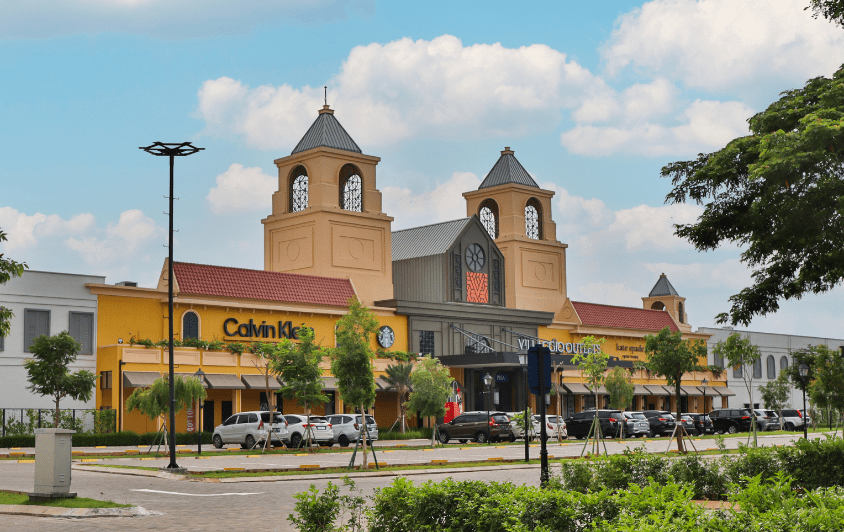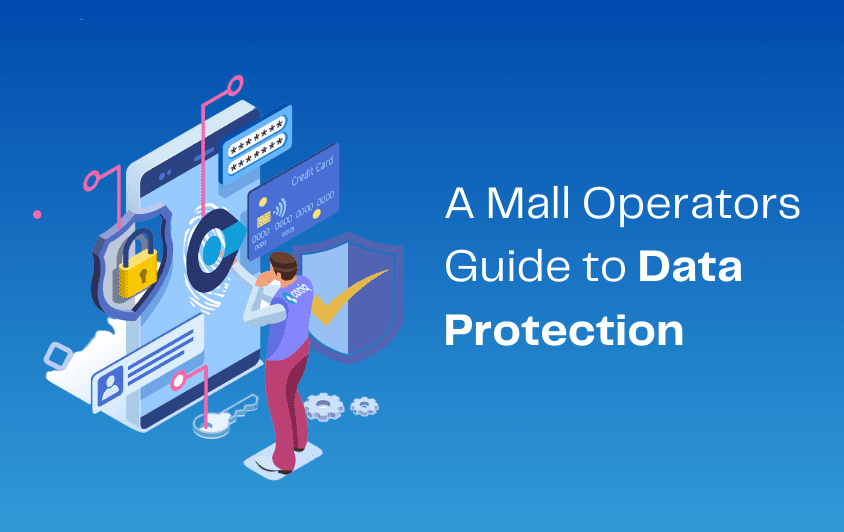With less than three months to go until St. Nick is sliding down our chimneys again, time is of the essence to whip your retail offering into shape for the 2023 holiday season. The year’s final quarter is always the busiest, with lots of big opportunities on the typical retailer’s calendar – Halloween, Black Friday, Thanksgiving, and Christmas.
These are occasions where it’s not only gift giving that is high on the shoppers’ agenda but also home furnishings and an uplift in groceries.
The holidays are vital for retailers, offering a chance to optimize sales and boost customer engagement while product demand surges. For many shopping destinations, their retail calendar will benchmark their annual success, determine their ROI, and influence decisions made for the following financial year.
Despite some hard economic times, US holiday retail sales have been steadily increasing year-over-year for at least a decade, with 2022 hitting a high of $936.3 billion.
The National Retail Federation reported that a record 197 million consumers shopped between Thanksgiving and Cyber Monday last year – an increase of 17 million YoY. The same research showed that 56% of consumers took advantage of early holiday deals that launched before Thanksgiving.
Multiple online reports point to the trend of starting holiday shopping early and sticking to a budget. With the global economy ever hanging in the balance and the cost of living rising by the day, consumers are more conscious about their spend across all categories. In 2022, 63.1% of those surveyed had set a specific budget (up from only 45.6% in 2021), and the average number of people they were buying gifts for had dropped to just four. This research also showed that the share of consumers who bought items at a discount increased from 38.4% in 2021 to 56.3% in 2022. We expect to see this trend continue into the 2023 season.
Taking all of this into account, it’s fundamental that you begin your holiday sales activity pronto. To give you somewhere to start, we’ve come up with five steps you can take to successfully plan, prepare, and execute your 2023 holiday retail calendar.
1. Offer an Omnichannel Retail Experience
The holiday rush can be hectic and overwhelming for some. Therefore, letting your customers choose how they interact with you is crucial. Providing customers with a great retail experience starts by offering them a seamless, omnichannel journey.
Ensure that all your retail channels offer a coherent, consistent experience for your customers, whether they’re interacting with you online, in-store, or via support services and chatbots. It’s also worth looking at how your online customers access your channels – studies show that 77% of shoppers use their mobile devices to search for products.
Now more than ever, shoppers value choice and simplicity. In fact, 81% of shoppers research online before going in-store to make a purchase. And those who wish to avoid crowds will look for online-only alternatives – a whopping 65% say they will shop online more this year – so meet your customers where they are!
Offering a frictionless and enjoyable experience makes you more likely to capture a customer’s loyalty and ensure they continue to purchase even after the holidays. Remember, customer acquisition costs 5x more than customer retention, so however hard you work to impress during the holidays, ensure you deliver that same high standard all year round.
Read our Playbook: The Ultimate Guide to Developing an Omnichannel Retail Strategy
2. Implement or Lean Into a Customer Loyalty Solution
Loyalty programs are a great way to boost your holiday marketing activities and sales performance. Retail competition can be fierce during the holidays, but building a strong loyalty following throughout the year can help you stand out!
During the holiday season, you are more likely to lose out to a competitor if you cannot satisfy your shopper’s needs. Your customers will be looking for the best possible deals, whether that be a gift, promotional bundle, free delivery, or simply a discount.
A loyalty program can capture the attention of potential customers and drive additional incremental revenue from existing ones. Your program is yours to control and could drive engagement by offering personalized, exclusive rewards, services, and savings opportunities. A well-run loyalty program can:
- Incentivize purchases (through points collection)
- Increase physical footfall (rewards for store visits)
- Increase the likelihood of repeat purchases
- Offer early access to limited-edition rewards
- Offer your customers seamless, omnichannel touchpoints
- Form a channel for real-time targeted communications (e.g., push notifications)
- Collect valuable customer data (transactional data)
- Use data insights to analyze shopping behaviors
- Help you personalize your wider marketing communications
Offering your customers privileges they cannot find elsewhere helps to keep them engaged with your brand. Exclusive access to time-sensitive offers or tiered rewards programs can build excitement and incentivize purchases. Rewarding existing loyalty members with additional holiday perks can solidify their loyalty by making them feel recognized and valued.
3. Enhance Your Email Marketing
In a 2023 survey, 45% of US consumers said they would like to receive communications from retailers and brands about holiday promotions and gift ideas. Analyze how your emails are performing and consider whether the following actions could improve your results:
- Capture data. Better understand your customers by generating campaigns that can collect new data through key touchpoints. Consider interests, hobbies, demographics, and additional contact information (email addresses and phone numbers).
- Segment your audience. Once you’ve found out what they want to see from you, tailor your campaigns to focus on the content they love and are more likely to engage with.
- Send holiday-specific special offers. Promote seasonal best-sellers, holiday bundles, or product recommendations that will resonate with your audience while positively impacting your bottom line.
- Analyze your use of holiday-specific keywords. Ensure you think about SEO when curating content to help you optimize your holiday traffic. The emails themselves may not relate to your rankings, but consider how your email content could influence future search intent.
- Personalize communication. Creating unique email marketing campaigns will help you catch a customer’s attention. Just remember that any personalization you have configured will only be relevant to your customer and not the person that they may be purchasing for!
- Help shoppers decide. Consider formulating a ‘gift guide’ or directing shoppers to a specified ‘gifts’ section of your website. This will allow customers to search for gifts specifically related to the person they wish to buy for (e.g., ‘gifts for him’)
Read our Playbook: How to Use Email Marketing to Build a Database of Ready-to-Buy Shoppers
4. Nail Your Social Media Strategy
Social media is another great way to show your audience the best you can offer. In fact, brands using three or more communication channels see a purchase and engagement rate that is 250% higher than those using single-channel campaigns.
However, you’ll need to be mindful that your audience will be viewing thousands of pieces of content over the next three months as everybody else also tries to boost customer engagement in the lead-up to the holidays. This means that your social content needs to be on point!
To create this high-value content, you need to define aims that will optimize your retail calendar’s holiday marketing objectives. This will help you execute your strategy and tailor your content accordingly. Here are six broad points to aim for:
- Prioritize high-value content that most interests your audience. These posts need to add value to your customers. E.g., festive promotions, holiday countdowns, competitions, tips or tricks, gift guides, and seasonal best sellers.
- Recognize and reward: The holiday season is a great time to build lasting connections with your shoppers by making them feel valued. This could be a great time to give existing customers or loyalty members additional perks!
- Aid the journey to conversion: If a customer discovers a product on social media, they don’t want to spend time scrolling through your website to find it. Add direct product links to social posts to streamline the effort your customer needs to invest.
- Prepare your content calendar in advance: Strategically plan when to share your content. Schedule social posts, publish blogs, and run promotional events to coincide with relevant holiday dates.
- Advertise early: Studies show that 35% of US consumers started their holiday shopping in September this year. Therefore, preparing content in advance and advertising early can help you get ahead of the competition.
- Analyze past success: Look at sales, footfall, and engagement data from previous years. This can help you to understand patterns or trends in buying behavior and allow you to plan future content campaigns.
5. Provide an Unforgettable Customer Experience
As we mentioned, retail competition can be fierce during the holidays. Therefore, you need to be able to stand out from your competitors. The best way to do this is by investing in unforgettable experiences that can build connections with your shoppers that cannot be replicated by other brands or channels. Plus, the promise of something tangible can be a great way to drive footfall to your brick-and-mortar stores. Consider whether you can integrate any of the following into your holiday retail calendar:
- Host an in-store event that gets customers involved. Whether that be a DIY gift workshop, holiday raffles, food sampling, product testing, store demonstrations, or even a kids club.
- Offer something interactive. Gamification is a great way to collect valuable data that is fun for customers. You could do this in-store or via one of your digital channels.
- Offer a donation. Offer the option to donate loyalty points or purchases to charity. Many people want to give something back to their community during the holiday season – this is your opportunity to connect with your shoppers emotionally!
- Ensure sublime service. Provide simple and efficient services to enhance your customer’s experience. This is fundamental for maintaining brand loyalty and engagement. You could offer an extended returns policy, an in-store collection option, or a hands-free shopping service to streamline the journey to purchase.
- Create an accessibility-friendly environment. Shopping in-store during busy periods can be uncomfortable and frustrating for many. Therefore, consider and remove potential barriers to make your customer’s shopping experience as positive as possible. In addition to making physical adaptations, try utilizing an omnichannel approach to meet customers where they feel most at ease. Having a clear and open channel of communication is another great way to provide a seamless and accessible customer journey.
Remember, the easier and more enjoyable your customer finds their experience, the more likely they will return to your store, even after the holiday season has ended.
Key Takeaways
To summarize, preparing your retail calendar for the holidays will help you ensure that you make the most of this crucial period. By utilizing the tips in this article, you are more likely to increase customer engagement, improve your ROI, boost your sales margins, and drive foot traffic back to your shopping mall. What’s not to love?
Start preparing your 2023 holiday retail calendar now and get ahead of the competition!






